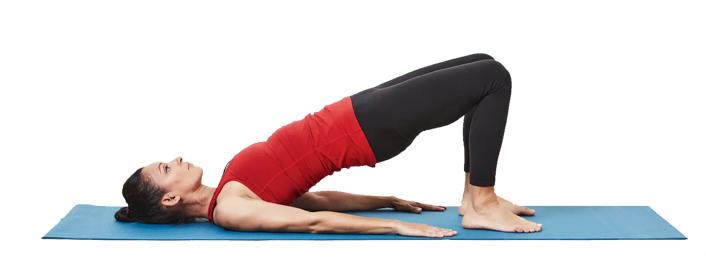 Eating a heart-healthy diet is one of the most helpful ways to protect your heart and reduce your risk of heart disease. Heart disease is the leading cause of death worldwide, but many of its risk factors such as high cholesterol, high blood pressure, and obesity can be managed through healthy eating. The foods you choose play an important role in supporting your cardiovascular health by helping to control cholesterol levels, maintain healthy blood pressure, and manage body weight.
Eating a heart-healthy diet is one of the most helpful ways to protect your heart and reduce your risk of heart disease. Heart disease is the leading cause of death worldwide, but many of its risk factors such as high cholesterol, high blood pressure, and obesity can be managed through healthy eating. The foods you choose play an important role in supporting your cardiovascular health by helping to control cholesterol levels, maintain healthy blood pressure, and manage body weight.
A heart-healthy diet is not about strict limitations or giving up the foods you love. It is about making balanced, thoughtful choices that promote long-term health. By including nutrient-rich foods while cutting back on unhealthy ingredients, you can strengthen your heart, boost your energy levels, and feel your best.
Eat More Healthy Foods
A heart-healthy diet includes plenty of nutritious foods like:
- Fruits and Vegetables: Fill your plate with a variety of colorful fruits and vegetables. They are packed with vitamins, minerals, and fiber that support heart health.
- Whole Grains: Choose whole-wheat bread, brown rice, oatmeal, and quinoa. Whole grains are rich in fiber, which can lower cholesterol.
- Lean Proteins: Eat healthy protein sources like fish, chicken, beans, and nuts. Fatty fish like salmon and tuna provide omega-3 fatty acids that are good for your heart.
Reduce Sodium Intake
Sodium, a mineral found naturally in foods like celery and milk, is also commonly added to processed foods such as bread, soups, and frozen meals. Consuming too much sodium can raise blood pressure, increasing the risk of heart disease and stroke. The American Heart Association recommends that adults limit their sodium intake to 2,300 milligrams (mg) per day—about one teaspoon of salt—with an ideal target of 1,500 mg for individuals with high blood pressure or greater heart health concerns.
To cut back on sodium, follow these tips:
- Read Food Labels: Look for products labeled “low sodium,” “reduced sodium,” or “no salt added.”
- Cook at Home: Prepare meals at home where you can control the amount of salt used.
- Use Herbs and Spices: Enhance the flavor of foods with herbs, spices, lemon juice, and vinegar instead of salt.
- Limit Processed Foods: Avoid processed and packaged foods like canned soups, frozen meals, and snack foods, which often contain high amounts of sodium.
- Be Cautious When Dining Out: Request that your meals be prepared with less salt and ask for sauces and dressings on the side.
Watch Your Portions
Portion control is necessary for maintaining a heart-healthy diet. Even nutritious foods can contribute to weight gain if eaten in excess, adding strain on the heart and increasing the risk of heart disease. Using smaller plates, measuring servings of higher-calorie foods, and eating slowly can help stop overeating by allowing your body time to signal when you are full. Be mindful of portion sizes, especially when dining out, where servings are often larger than recommended.
Listening to your body’s hunger cues is just as important. Avoid eating out of boredom or stress and focus on balanced meals using the “plate method”: fill half your plate with vegetables, a quarter with lean proteins, and a quarter with whole grains. Practice measuring portions until you can judge serving sizes with confidence. These conscious habits can help manage weight, support heart health, and make meals more satisfying.
Plan Balanced Meals
Planning balanced meals is essential for maintaining a heart-healthy diet and ensuring you get the nutrients your body needs. One effective method for doing this is the “MyPlate” approach, which recommends filling half of your plate with fruits and vegetables, one-quarter with whole grains, and the remaining quarter with lean protein. This simple yet powerful strategy helps you incorporate a variety of heart-healthy foods, ensuring that you get plenty of vitamins, minerals, and fiber while controlling calorie intake. Fruits and vegetables are rich in antioxidants and nutrients that support heart health, while whole grains provide fiber that helps lower cholesterol. Lean proteins, such as fish, poultry, and legumes, are lower in saturated fats, which can contribute to heart disease when consumed in excess. By following this method, you can create well-rounded meals that nourish your body and support cardiovascular health.
Enjoy Occasional Treats
It is completely fine to treat yourself every now and then. Having a candy bar or some potato chips occasionally will not ruin your heart-healthy diet. The key is moderation, treats should be occasional, not a regular habit. Focus on eating nutritious foods most of the time, and an occasional indulgence won’t disrupt your overall eating plan.
To maintain a heart-healthy diet, limit added sugars to less than 10% of your daily calorie intake. For example, if you consume 2,000 calories per day, aim for no more than 200 calories from added sugars, which equals about 50 grams. Also, avoid giving foods or drinks with added sugars to children under 2 years old. With good planning and mindful choices, heart-healthy eating can be both possible and enjoyable.
Small Steps, Big Impact
Improving your heart health does not demand extreme changes to your diet all at once. Start by making small, manageable adjustments that fit into your routine. For example, try adding an extra serving of vegetables to your meals, this can increase your intake of heart-healthy nutrients like fiber, vitamins, and antioxidants. Another small change is switching sugary drinks to water, which not only helps you stay hydrated but also reduces extra calories and sugar that can contribute to weight gain and high blood pressure. By taking these small steps and making them part of your daily routines, you can slowly build a heart-healthy lifestyle. Over time, these adjustments can have a significant impact on your cardiovascular health, helping to lower your risk of heart disease while improving your overall well-being.
Take charge of your heart health today, your heart will thank you!
References:
American Heart Association. (2024). Healthy eating for a healthy heart. Retrieved from https://www.heart.org
Centers for Disease Control and Prevention. (2024). Healthy eating tips. Retrieved from https://www.cdc.gov
Mayo Clinic. (n.d.). Heart-healthy diet: 8 steps to prevent heart disease. Retrieved December 17, 2024, from https://www.mayoclinic.org/diseases-conditions/heart-disease/in-depth/heart-healthy-diet/art-20047702
National Heart, Lung, and Blood Institute. (2024). Heart-healthy eating. Retrieved from https://www.nhlbi.nih.gov
 How To Do Cable Face Pulls
How To Do Cable Face Pulls

 Stress is a natural part of life, and the human body is designed to respond to it. Whether preparing for a major test, meeting a work deadline, or facing unexpected challenges, stress can help maintain alertness, motivation, and readiness for action. However, when stress becomes persistent without periods of relaxation, it can take a toll on both physical and mental health.
Stress is a natural part of life, and the human body is designed to respond to it. Whether preparing for a major test, meeting a work deadline, or facing unexpected challenges, stress can help maintain alertness, motivation, and readiness for action. However, when stress becomes persistent without periods of relaxation, it can take a toll on both physical and mental health.


 These days nutrition and food literacy are often discussed, but many may not comprehend the differences between the two and their implications for health. While these terms are frequently used interchangeably, they are not the same. Understanding the differences is vital for understanding how food influences well-being.
These days nutrition and food literacy are often discussed, but many may not comprehend the differences between the two and their implications for health. While these terms are frequently used interchangeably, they are not the same. Understanding the differences is vital for understanding how food influences well-being.



 Instead of painting a rainbow, why not eat a rainbow? Red, orange, yellow, green, white, blue, and purple foods each bring unique health benefits, all thanks to the natural phytochemicals they contain. These phytochemicals not only provide food with distinct aroma and flavor but also contribute to improving health in several powerful ways. By consuming a variety of colorful fruits and vegetables, you are boosting your immune system, fighting inflammation, and reducing your risk for chronic diseases such as cancer, heart disease, and diabetes.
Instead of painting a rainbow, why not eat a rainbow? Red, orange, yellow, green, white, blue, and purple foods each bring unique health benefits, all thanks to the natural phytochemicals they contain. These phytochemicals not only provide food with distinct aroma and flavor but also contribute to improving health in several powerful ways. By consuming a variety of colorful fruits and vegetables, you are boosting your immune system, fighting inflammation, and reducing your risk for chronic diseases such as cancer, heart disease, and diabetes.


 Eating a heart-healthy diet is one of the most helpful ways to protect your heart and reduce your risk of heart disease. Heart disease is the leading cause of death worldwide, but many of its risk factors such as high cholesterol, high blood pressure, and obesity can be managed through healthy eating. The foods you choose play an important role in supporting your cardiovascular health by helping to control cholesterol levels, maintain healthy blood pressure, and manage body weight.
Eating a heart-healthy diet is one of the most helpful ways to protect your heart and reduce your risk of heart disease. Heart disease is the leading cause of death worldwide, but many of its risk factors such as high cholesterol, high blood pressure, and obesity can be managed through healthy eating. The foods you choose play an important role in supporting your cardiovascular health by helping to control cholesterol levels, maintain healthy blood pressure, and manage body weight.
